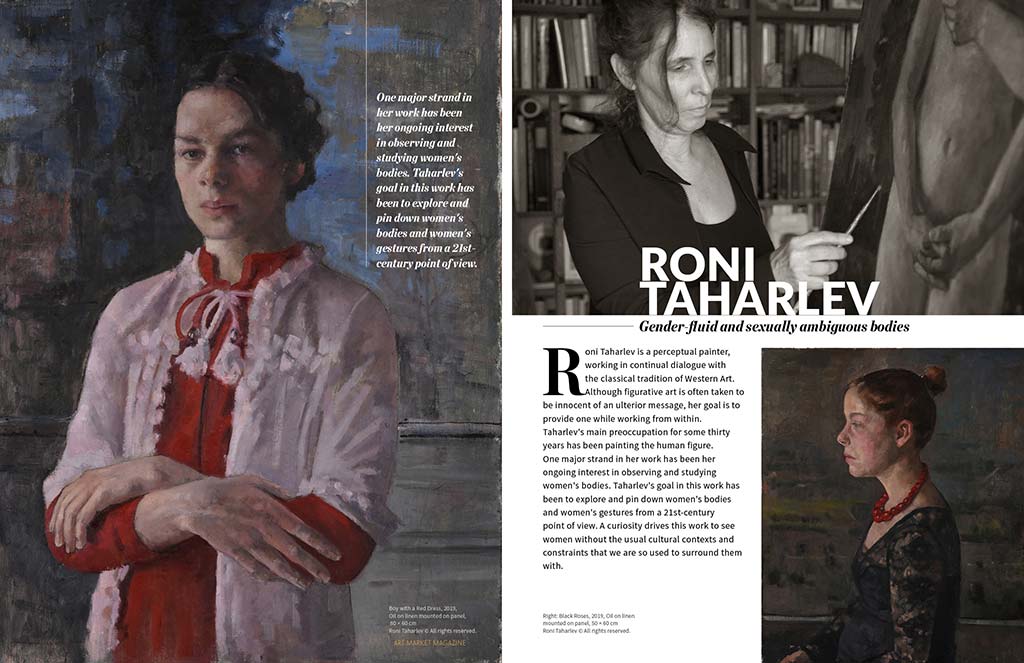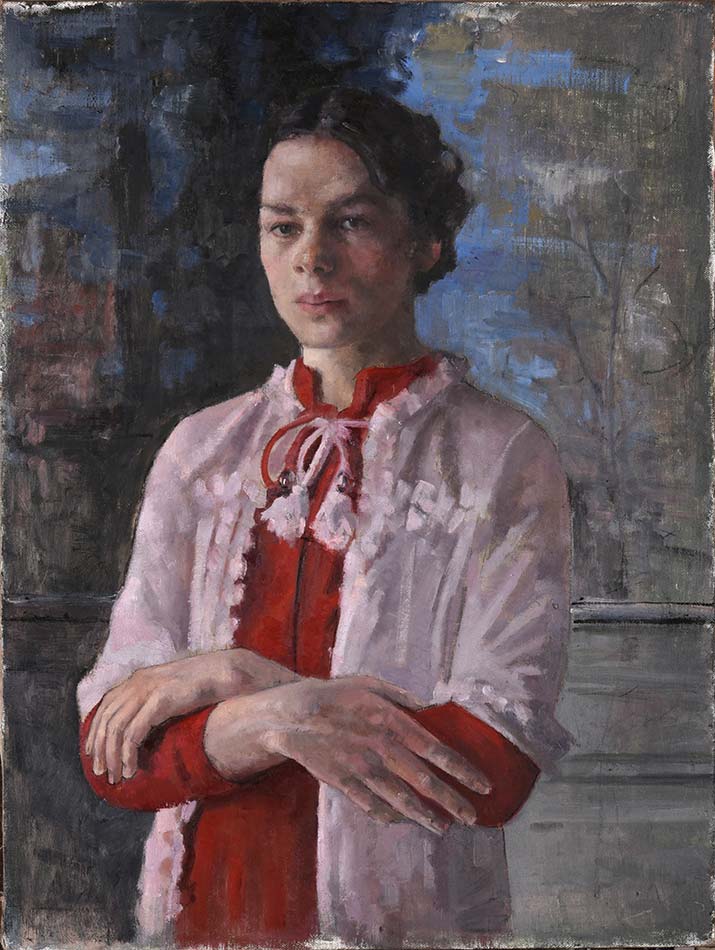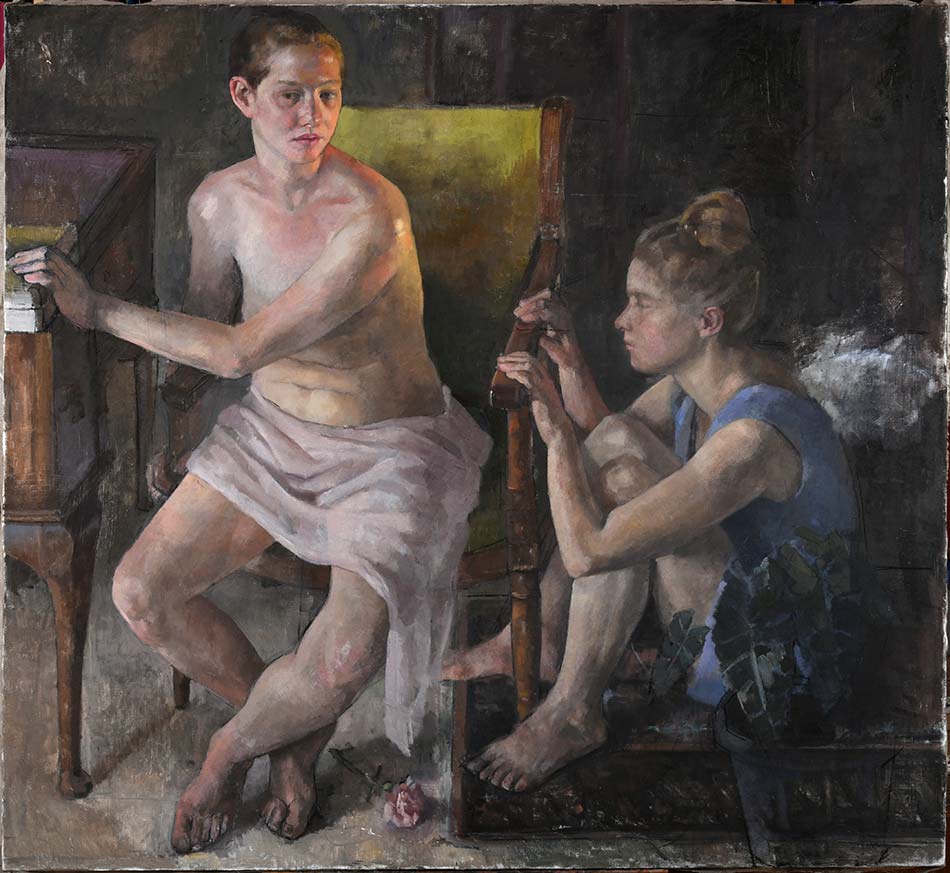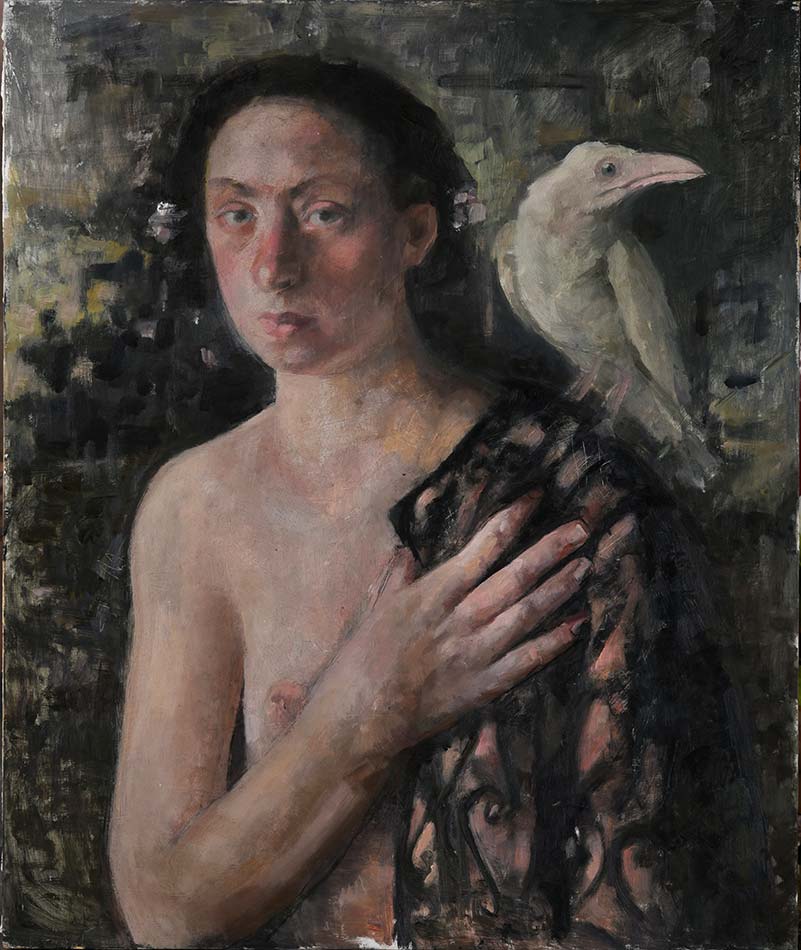RONI TAHARLEV | GENDER-FLUID AND SEXUALLY AMBIGUOUS BODIES

Roni Taharlev is an Israeli figurative painter working from observation, specializing in portraits, figures, and still lives. Bringing into her work an intimate knowledge of the classical tradition in European painting, she corresponds with this tradition while insisting at the same time on a modern-contemporary perspective. Two recent series which demonstrate Taharlev’s highly personal artistic language, with which she investigates fundamental experiences of identity and selfhood in modern Western society, are a series of gender-“Fluid Annunciations”, including “Not This Light, the Other Light” that was selected in 2019 for the Louvre-organized exhibition dedicated to the moon at the Grand Palais in Paris; and a series of portraits exploring the limits of gender binaries and the zero-point of their disappearance. Taharlev teaches at the Bezalel Academy of Arts and Design in Jerusalem.

“One major strand in her work has been her ongoing interest in observing and studying women’s bodies. Taharlev’s goal in this work has been to explore and pin down women’s bodies and women’s gestures from a 21st-century point of view. “

Oil on linen mounted on panel,
80 × 60 cm
Roni Taharlev © All rights reserved.
Roni Taharlev is a perceptual painter, working in continual dialogue with the classical tradition of Western Art. Although figurative art is often taken to be innocent of an ulterior message, her goal is to provide one while working from within.
Taharlev’s main preoccupation for some thirty years has been painting the human figure.
One major strand in her work has been her ongoing interest in observing and studying women’s bodies. Taharlev’s goal in this work has been to explore and pin down women’s bodies and women’s gestures from a 21st-century point of view. A curiosity drives this work to see women without the usual cultural contexts and constraints that we are so used to surround them with.

Roni Taharlev © All rights reserved.
Taharlev has built up over decades an intimate knowledge of and relationship with the history of Western art: this allows her to place her models in poses that bear a close relationship to classical poses while introducing small twists that transform the bodily effects and overtones of these poses. Classical poses repeatedly fixate women’s bodies as delicate, self-deprecating, currying favor, seductive, or helpless. In doing so, Taharlev deliberately operates within the rather narrow range of positions entrenched in the history of Western art, avoiding such escape routes as grotesque or obese figures, say. Her work, therefore, often corresponds with old major precedents in Western art – be it with Roman frescoes, with Renaissance and Baroque artists (notably Titian), or with moderns such as Degas, Cezanne, and Balthus.
Taharlev’s more recent work takes this exploration to another level by representing gender-fluid and sexually ambiguous bodies.

Oil on linen mounted on panel,
120 × 130 cm
Roni Taharlev © All rights reserved.
In this series of works, which has been exhibited in a solo exhibition at the Herzliya Museum of Art, Israel, in spring 2019, Taharlev pushes the envelope of the ultimate glass ceiling for both men and women. It is the constraints of rigidly determining black-and-white gender binaries that do not allow the freedom of all nuances of gray. As part of this project, Taharlev has been seeking a theme or a place that expresses ambivalence, tension, and the conflicting impulses to know or not to know. This is what has led her, among other topics, to the Annunciation, of which she did several variations that are preoccupied with gender indeterminacy and sexual fluidity.
One of them was borrowed by a Louvre curator for the Moon exhibit at the Grand Palais in Paris in April 2019.

Oil on linen mounted on panel, 50 × 60 cm
Roni Taharlev © All rights reserved.

